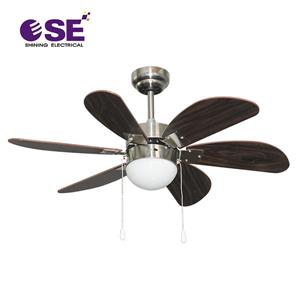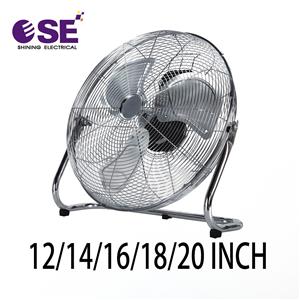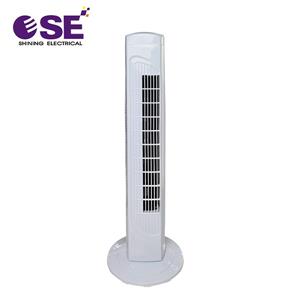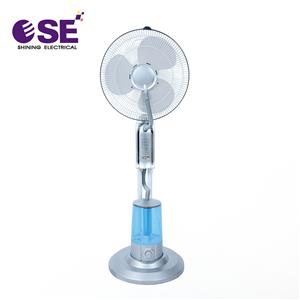How does the air flow around the fan?
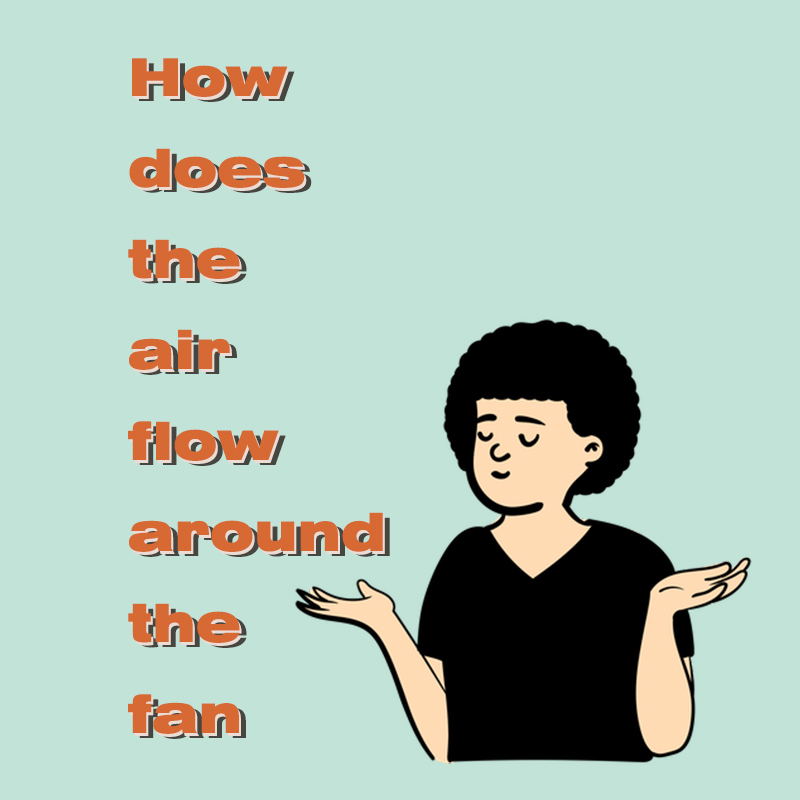
Do you notice an aura around you when you have a ceiling fan on? This aura is called airflow, and it moves to create an environment where the temperature and air change to meet our needs. So, how does air flow form, and how does it move?
Air velocity is related to the velocity movement of the air stream, CFM (cubic feet per minute) refers to the volume of airflow passing through a certain volume per unit time, expressed as ft3/min cubic feet per minute, the volume of air passing through the fan outlet (or inlet) cross-section per unit time.
CFM measures the amount of air moved, whereas airflow can be measured more directly represented as wind movement, so ceiling fans are generally measured and graded according to airflow rather than CFM.
When the fan blades are in positive rotation, the air at the front of the blades is moving less quickly than at the back, creating a pressure difference in the air. When multiple blades are rotating at high speed, the air starts to flow and the air near the ceiling is quickly "pressed" to the ground, creating a flow of air, also known as wind.
Simply put is the blade on both sides of the space difference and power to produce air pressure, blade speed increase to make the air pressure increases, gas circulation movement.

(Diagram of the zone of airflow generated by a positive rotation of a ceiling fan)
The airflow below is drawn down from above by the ceiling fan. If there is too little air near the ceiling, this will affect the movement, alternation and circulation of the airflow below; if there is sufficient air above, the size of the airflow below is determined by the speed of the ceiling fan.

(Diagram of the zone of airflow created by the reversal of the ceiling fan)
When the ceiling fan is reversed, the airflow below is sucked away by the airflow above the ceiling fan, which slowly flows along the walls and other barriers to the floor, where it is sucked away again by the airflow above the ceiling fan, creating a constant circulation, thus creating two recirculation zones to the left and right of the ceiling fan. The wind is stronger in the recirculation zone, when the space below is at a uniform temperature and less windy.
So when we turn the ceiling fan forwards and reverse we can clearly feel that the airflow movement is different, which also leads to different wind strength and temperature levels forwards and backwards.
If you are interested, welcome to contact us:
![]() WhatsApp: +86 13144118381
WhatsApp: +86 13144118381
![]() Email: operating@fsshining.com
Email: operating@fsshining.com
![]() Web: www.fsshining.com
Web: www.fsshining.com
![]() Foshan Shining Electrical Appliance Co., Ltd.
Foshan Shining Electrical Appliance Co., Ltd.

